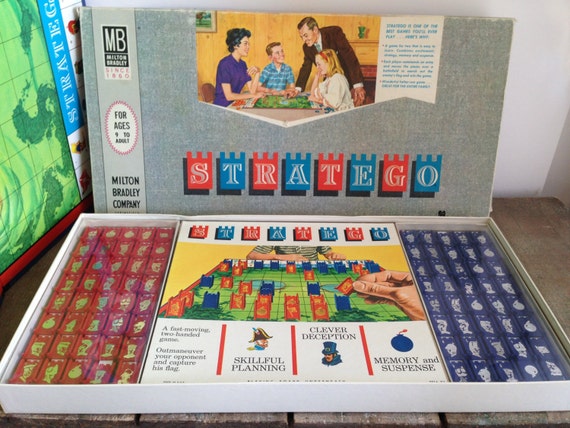
If you do so, and if during the game you are able to capture all of your opponent's Miners, you reduce the number of ways your opponent can win the game in half. It is usually a good idea to completely surround your Flag with Bombs. Once my opponent figures out my bomb formation for certain setups, he has to guess between three different locations for my flag. I often use similar setups as far as bomb locations, but alternate where my flag is located.

However, they are particularly good for bluffing (as there are no less valuable pieces to attack them with to call the bluff), and for flag scouting or spy scouting (as the opponent's flag and spy are more easily exposed).When you play each game against the same opponent, then alternate your flag location as well as bomb setups, to insure you opponent can't predict where your flag is located.

In quick games, scouts are good for 3 of the 4 things that they are good for in classic Stratego, not including actual scouting. If your opponent's flag could be in the corner defended by both bombs, you should probably save your miners until you get a chance to attack the corner, but if your opponent's flag could not be in the corner defended by both bombs, using 1 miner to make a good guess as to where a bomb might be may not be a bad idea. In quick games, it is best to save your miners (or at least 1 of them), as people often use both bombs to protect their flag. One can use both bombs to protect their flag and attempt to capture both of the opponent's miners, one can place bombs in unexpected places as to try to make their opponent blow up a high ranking piece, or one can do a little of both. There are 3 types of strategies regarding bomb placement in a quick game. When being used for defense, it is generally paired with the spy as to ensure that if defeated by the opponent's marshal, that marshal can then be defeated by the spy. In general, people use their general for defense, and this is generally a good idea, at least until you know where your opponent's marshal is (or at least have a generally good guess of the general area where your opponent's marshal is). Since many people would expect it and attack with their spy, it is not the wisest idea to send in your marshal first, unless you have a good idea where your opponent's spy is, or if you send it in at the same time as another piece as to confuse your opponent as to which piece to attack.ĭefensive strategies with your marshal can also work, if you leave your marshal somewhere generally close to your flag, and wait for your opponent to send pieces closer. In quick games, since there are only 7 moveable pieces, if you think that a piece is your opponent's marshal, go ahead and attack it, because even if you attack a random moveable piece, you have a 1 in 7 chance of attacking your opponent's marshal, and another 1 in 7 chance of attacking their spy. The 2 most common spy placement strategies in quick games are placing the spy directly behind a lake, and placing the spy directly behind or next to the general, but since these are so common, it is actually usually better to put the spy somewhere unexpected. One can either place their flag behind bombs and attempt to capture both of the opponent's miners, or one can place the flag somewhere unexpected, and hope to find the opponent's flag first. There are 2 types of strategies regarding flag placement in a quick game.

See also List of Quick Game Setups and Strategies.


 0 kommentar(er)
0 kommentar(er)
